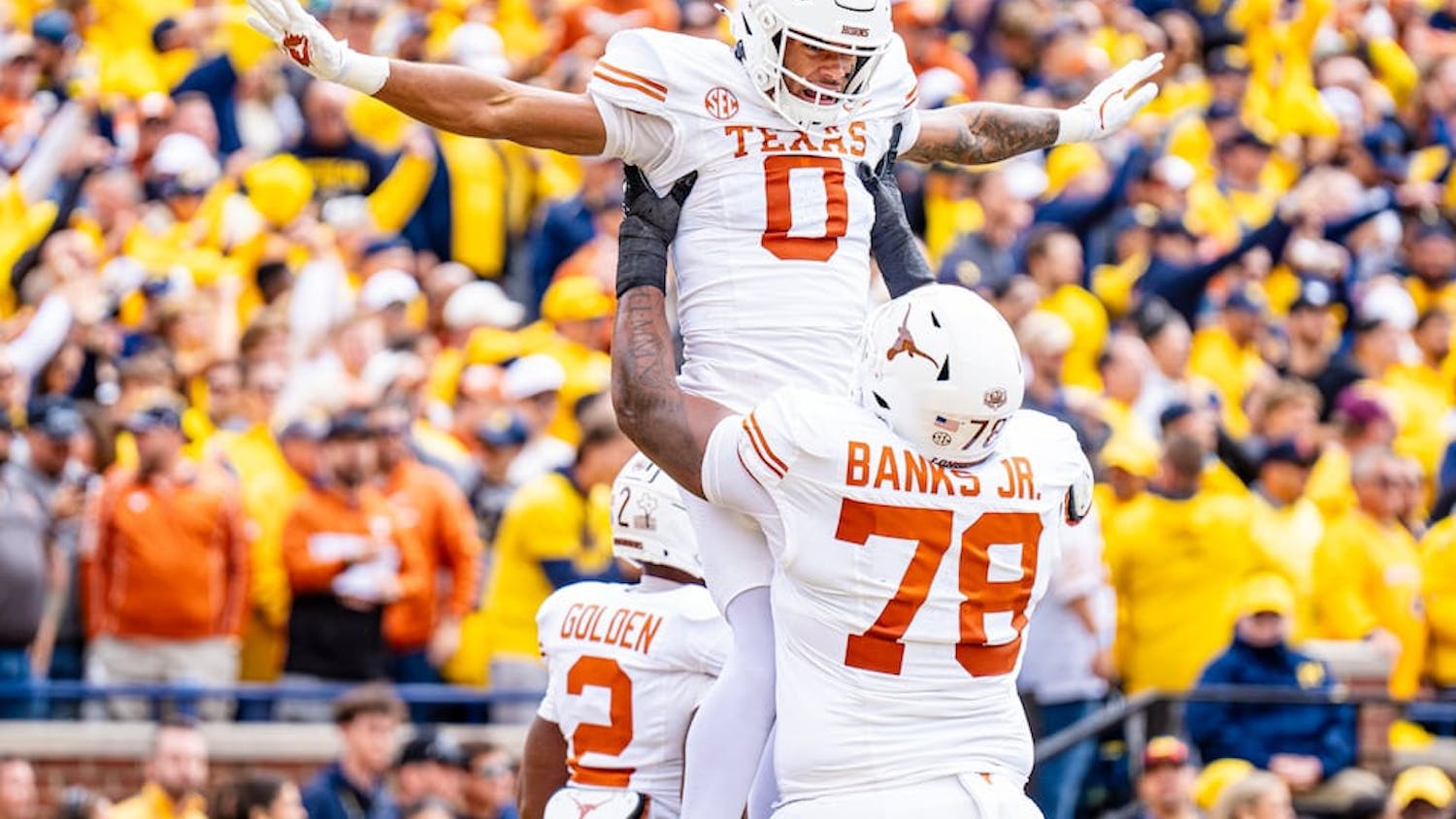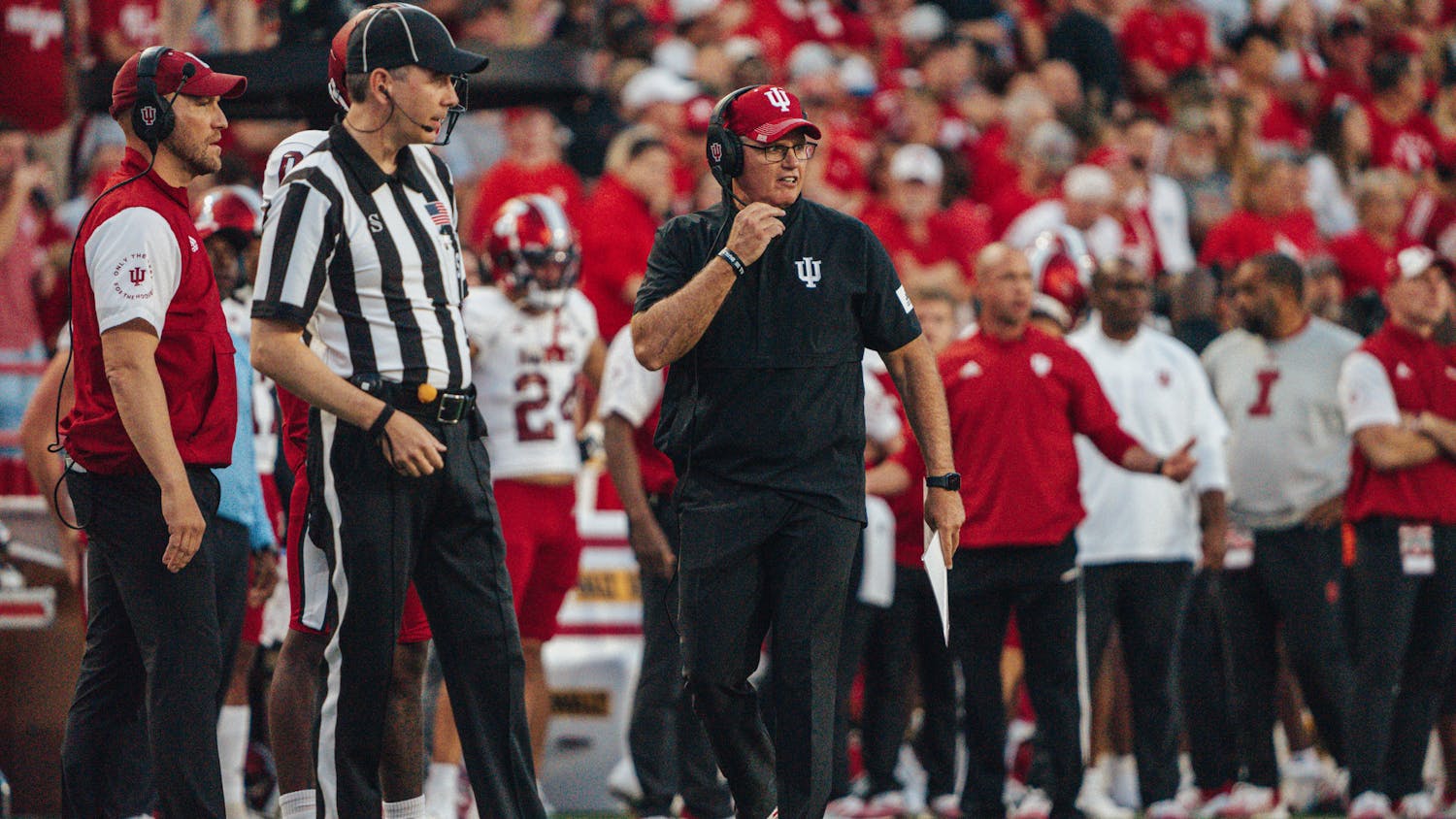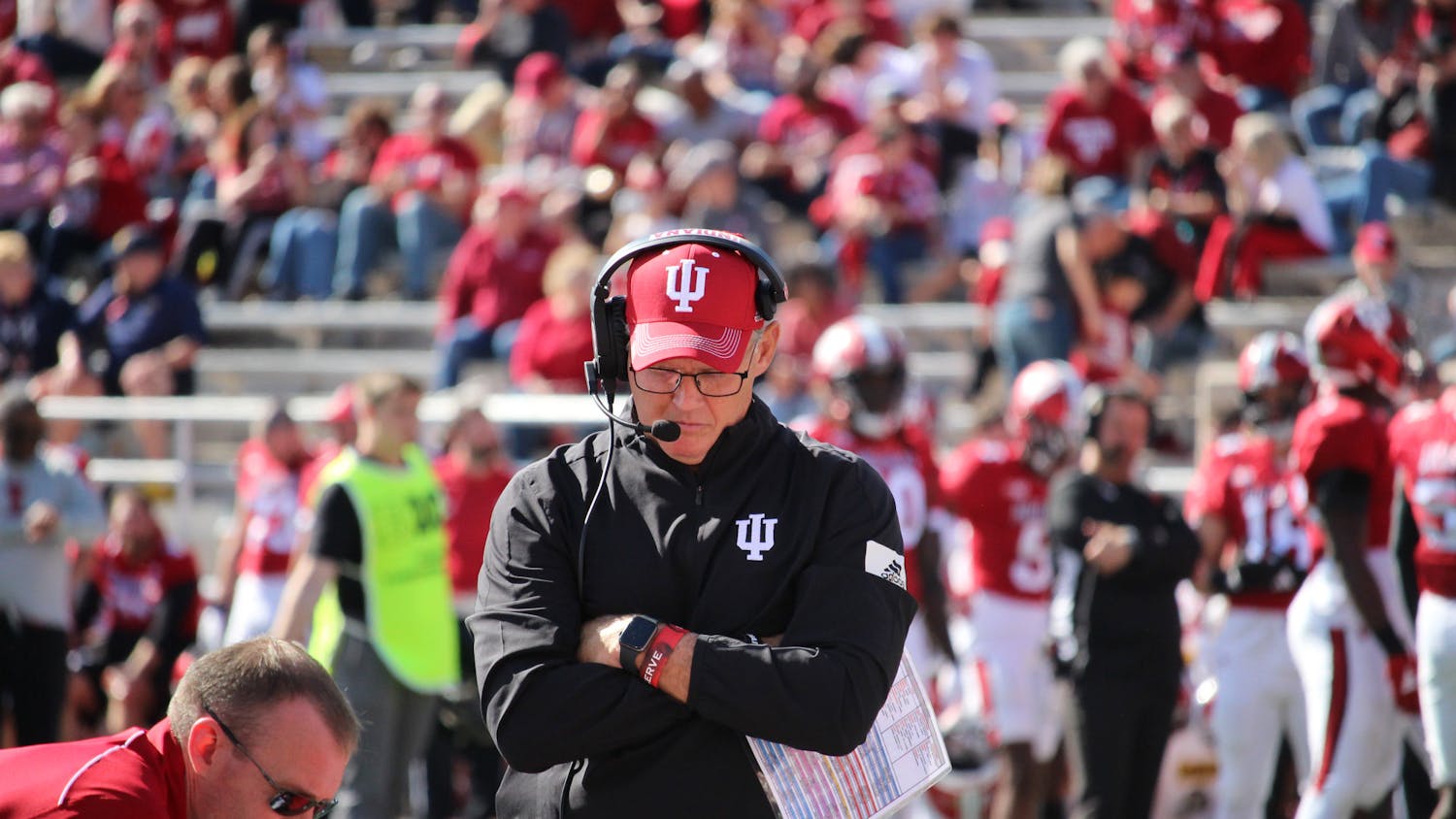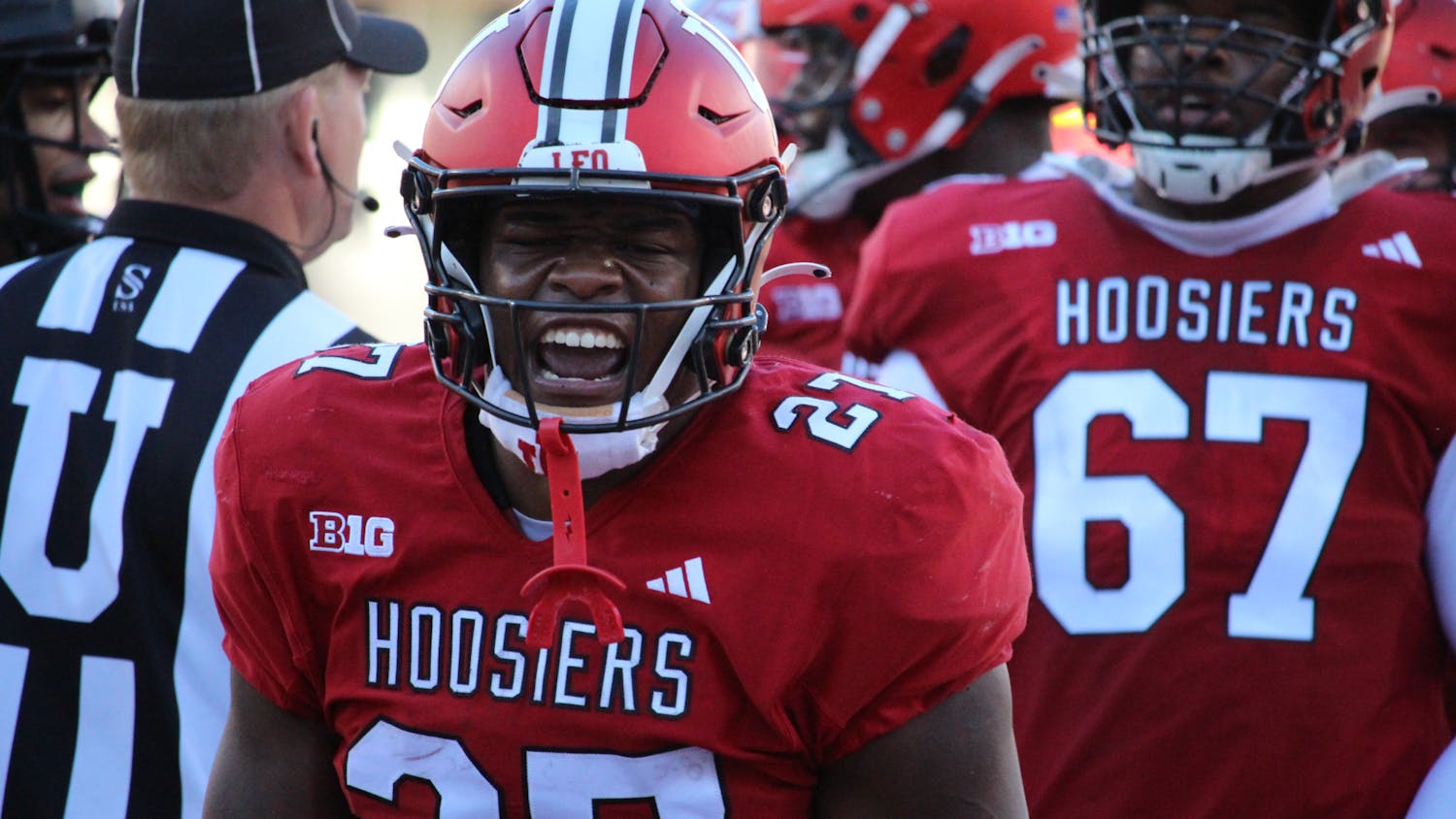Caleb Jones trudged toward the sideline, his hands on top of his helmet, eyes staring toward the turf. He looked up toward the seats, pounding his hands on his thighs. He ripped his helmet off and flung it to the ground.
Michigan State defensive back Chester Kimbrough had just broken through the right side of the line, part of Jones’ responsibility, and knocked the ball out of IU quarterback Jack Tuttle’s hands. With just under six minutes left in the game and IU down by five, Michigan State took over possession.
It was another turnover. It was another drive that the offense let get away. It was another missed opportunity to beat a top 10 team.
As it turned out, Indiana got one more chance after Indiana defensive back Noah Pierre came down with an interception. But the following four plays were emblematic of Indiana’s offensive effort as a whole: incompletion, sack, incompletion, incompletion.
Indiana’s defense gave it a chance. The offense wasted it.
And that was it. Indiana dropped its homecoming game to Michigan State, 20-15.
“At the end of the day, the buck stops with me,” head coach Tom Allen said. “I’m responsible. The kids played hard. From that perspective, I can’t fault them on that. But you got to execute. That’s the bottom line.”
Saturday was a chance for Indiana to get its season back on track after a mediocre 2-3 start. Indiana was coming off a bye-week, a 14-day period for the team to reset and evaluate themselves. A win on Saturday would’ve allowed them to regain some of the momentum they’d entered the season with.
Instead, Indiana is now 2-4 with Ohio State coming to Bloomington next week. The offensive issues aren’t getting any better and there is little reason to believe there’s a solution for the rest of the season.
Indiana’s defense was exceptional, as it’s been all season. They contained Michigan State’s Heisman candidate Kenneth Walker III to just 3.7 yards per carry. They held MSU quarterback Payton Thorne to just 126 passing yards. They forced two turnovers.
“I think our D-line did a great job knocking their O-line back and playing gaps,” Linebacker Micah McFadden said. “Everybody else did their job finding the ball and bumping their gaps.”
The questions, though, come on the other side of the ball. There was a cautious optimism that Indiana’s offense could find a new gear with Tuttle, who was taking over for the injured Michael Penix Jr. One of the reasons Indiana’s offense had struggled much this season was due to Penix Jr.’s inconsistencies and inability to take care of the ball.
Unfortunately for Indiana, it might not matter how productive the defense is the rest of the season given the offense’s continued shortcomings. What made Saturday’s offense performance even more frustrating was the fact that Indiana outgained Michigan State 332-241 in overall yardage, 188-144 in the air and 134-100 on the ground.
But regardless of who was under center, the problems that have plagued Indiana’s offense all season remained: turnovers and an inability to score in the red zone.
Indiana couldn’t score a touchdown on two red-zone appearances in the first half. Indiana led by two at halftime, but similar to the game against Cincinnati, its defense put the Hoosiers in a position to be up by much more. After finally breaking through with its first Big Ten touchdown of the year in the third quarter, Indiana is now 12-for-24 (50 percent) scoring touchdowns in the red zone this season. The Hoosiers were 23-for-35 (65 percent) last season.
“It continues to be the same issues as far as not finishing drives in the red zone, moving the football but not getting touchdowns,” Allen said. “That can be the difference when you lose the game by five points.”
Then there were the turnovers. Tuttle threw a pick-six in the first quarter, more points for the opposition that were out of the defense’s control. In the third quarter, Tuttle lofted a pass over the middle of the field, which the Spartans turned into seven points. Between Tuttle and Penix Jr., the Hoosiers have thrown 10 interceptions in six games this season. They had a total of five in eight games all of last season.
“I take full responsibility,” Tuttle said. “I just got to take care of the ball and take a sack if I get pressure. That’s it.”
A prevailing criticism of Indiana’s offense up to this point was its lack of creativity, a majority of which was directed at offensive coordinator Nick Sheridan. The Hoosiers, however, tried some different looks on Saturday. On the first possession, Indiana threw the ball nine consecutive times. They spread running back Stephen Carr out wide to get him in space. They put in freshman quarterback Donaven McCulley for some designed runs. It opened up some holes for running backs Chris Childers and Davion Ervin-Poindexter to break off big gains.
But Indiana’s inability to connect on the deep ball, something that was a key part of the offense last season, continued to make it one-dimensional on Saturday. A majority of Indiana’s completions were on underneath routes. They didn’t even didn’t complete a pass for more than 22 yards, a fact that is also due to its receivers not winning one-on-one matchups. It allowed Michigan State’s safety to creep up and stack the box, limiting short passes.
“Somebody’s got to step up and make a play,” Allen said of the wide receivers. “… I’m frustrated with that. It needs to get fixed, like today. That’s how you created explosive plays.”
On Saturday, Indiana’s quarterback changed. They tried opening up the playbook more. But it still didn’t work. And there seem to be few answers left.

There are few answers left for Indiana’s offense after loss to Michigan State
More
Joe Elms
· September 8
Kylee Corman
· November 27
Kylee Corman
· November 26





